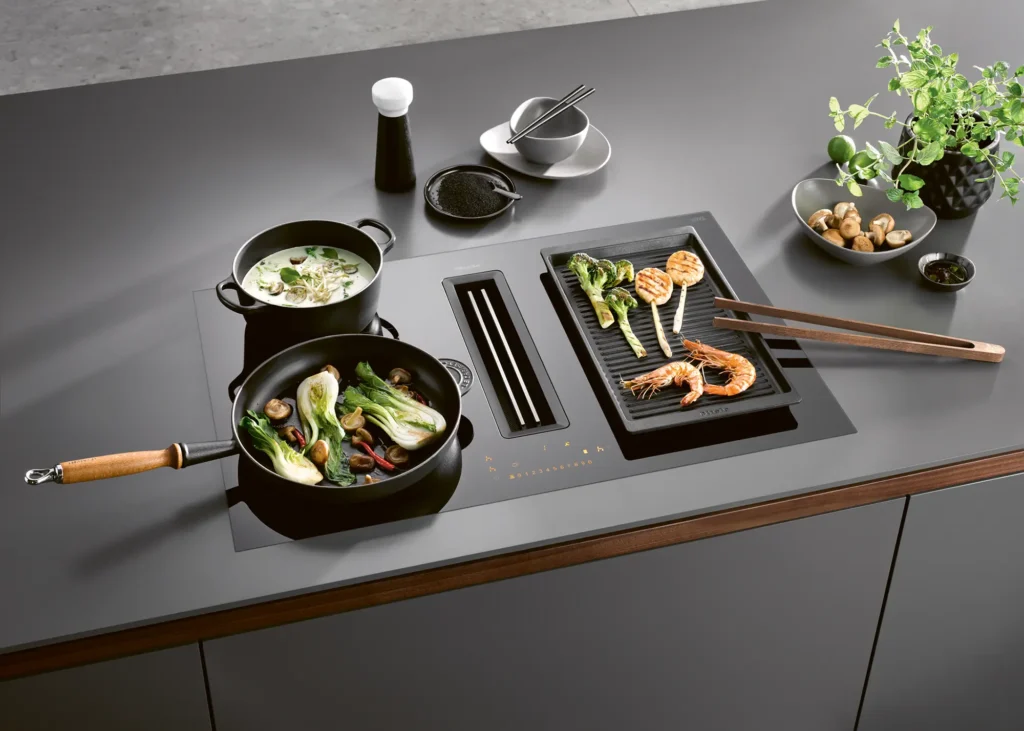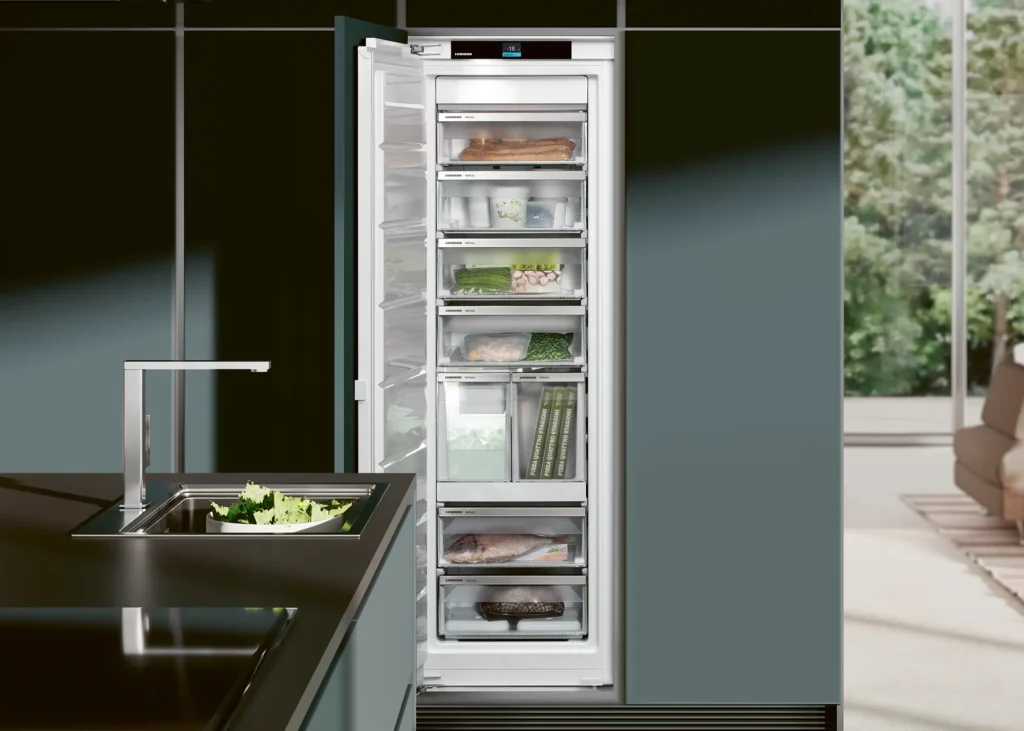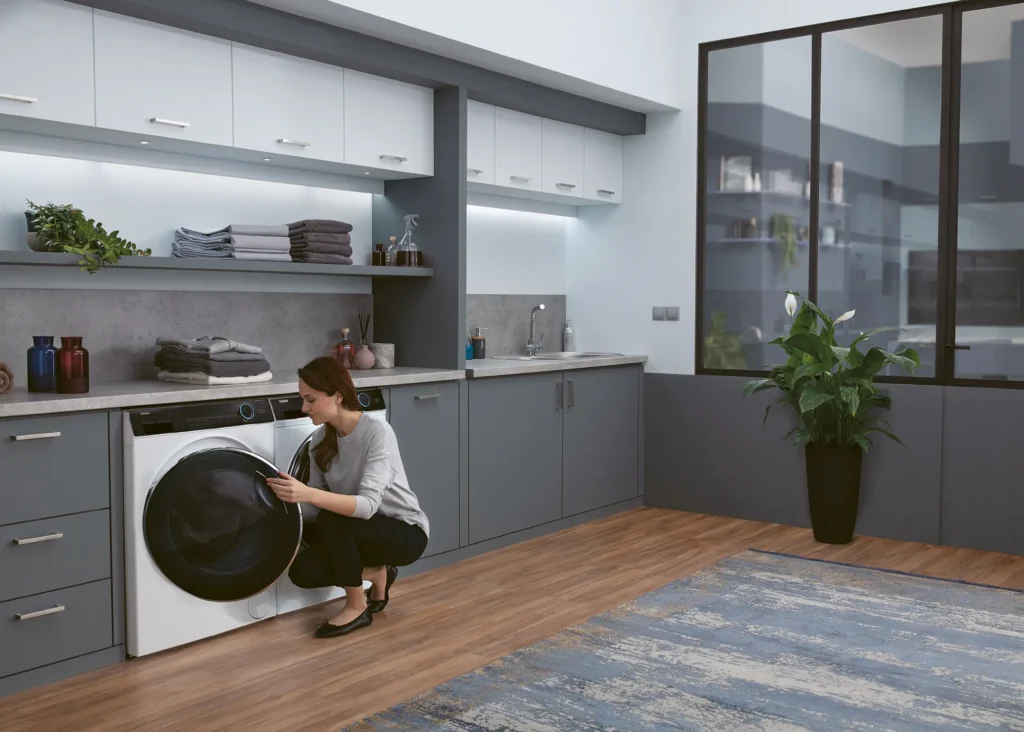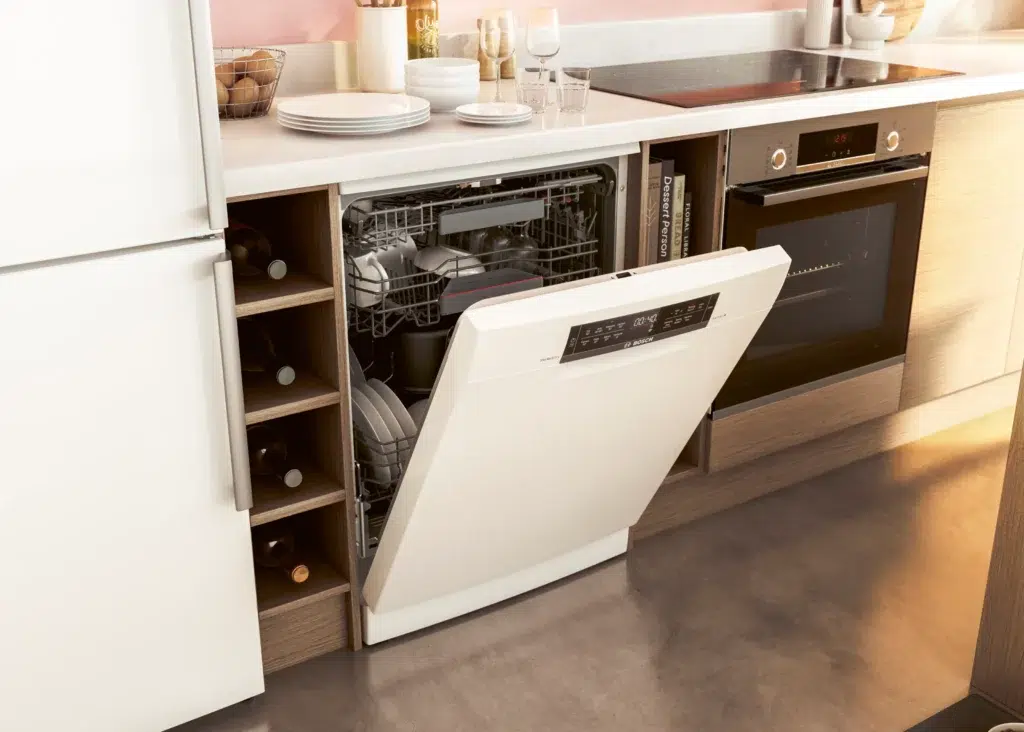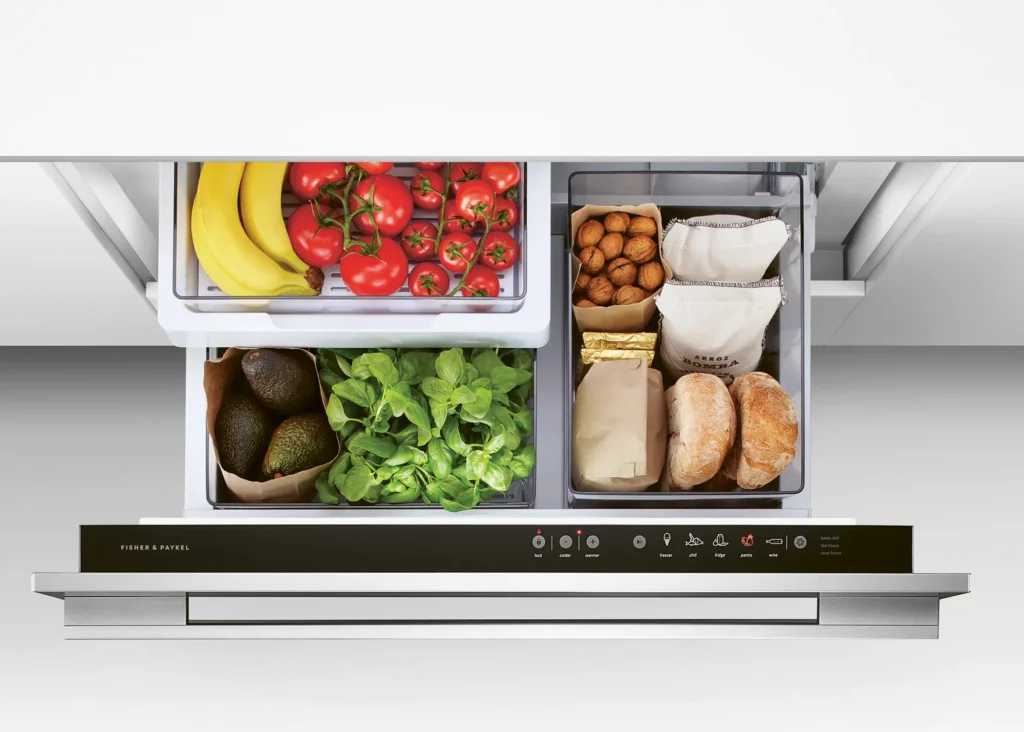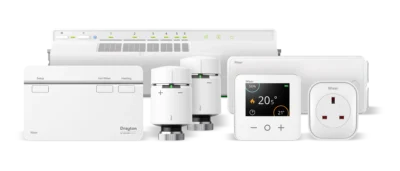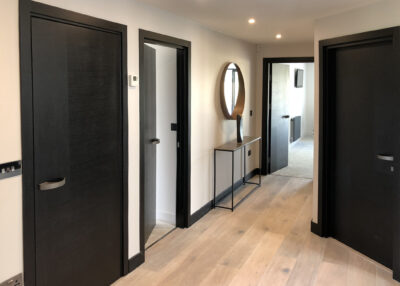Quiet Kitchen Solutions: Design Tips, Low-Noise Appliances & More
The kitchen is the heart of the home, asked to perform multiple functions. It’s where your day begins. Where you cook, eat, wash up, work, relax and connect with your loved ones – the social hub of the family. But kitchens aren’t always as quiet and enjoyable to be in as we might hope.
Unfortunately, kitchens are often filled with appliances that, if not carefully selected, can fill the room with excessive noise. So, how can you create a space that’s pleasant to use and free from unwanted distractions?
Why is My Kitchen Noisy?
Some of the main noise sources that can impact enjoyment of your kitchen and surrounding rooms include kettles reaching boiling point, spin cycles on washing machines and extractors that won’t let you hear yourself speak. Spending time specifying the best and quietest appliances can make all the difference when trying to hush your kitchen.

Many of us aspire to an open-plan kitchen; but noise will travel in these spaces. Head the issue off at source by building in acoustic measures and specifying low-noise appliances (these Quiet Mark certified models are all from Bosch)
When thinking about sound, a useful benchmark is normal conversation, which is around 60 decibels A (dBA). Raised speech is around 65 dBA.
A freestanding washing machine on a spin cycle can be as loud as 86 dBA, which is the equivalent of a gas-powered lawn mower running through your kitchen. So, when the washing machine’s on, many of us tend to leave the room and take the conversation elsewhere. But what if you did’t have to?
Solutions for a Quiet Kitchen
Build It and Quiet Mark understand how unwanted noise can deeply impact on your enjoyment of your new home. So, we’re working in partnership to create a series of guides to help you achieve quiet, comfortable living. Here’s our checklist for a truly quiet kitchen:
1. Low-Noise Kitchen Layouts
Your kitchen’s layout plays an important role not only in shaping its aesthetics, but also its acoustics. Open-plan kitchen and living spaces are great for social interaction, but sound can travel in these zones.
So, think carefully about where to place appliances. Try to avoid siting them near your living area; ideally, they’ll be in a separate utility room or cupboard. It can be surprisingly difficult to relax when your dishwasher is churning away in the background. Turning the layout round a corner can be particularly effective, with sources of noise all together in one section, and dining or living zones in the other.
It’s also important to consider the rooms adjacent and above/below spaces where you have noise-generating appliances. Try to avoid placing bedrooms directly above kitchens – instead, prioritise this part of the floorplan for less sensitive areas, such as bathrooms.
2. Zoning & Screening Your Kitchen
If you want to keep your kitchen open, with minimal walls and floors, consider creating quiet areas by separating the space from noisy zones (such as where the extractor fan, washing machine and/or dishwasher are) with room dividers or corners that break the direct path of sound.
Island units, peninsulas and half-height walls can all help to zone a space, too. Or you might use freestanding folding screens, which are particularly good at absorbing high-frequency tones. You could also consider a broken-plan design, perhaps using acoustic glass doors in order to provide screening between kitchen and living areas while retaining a sense of openness.
More Advice: The Quiet Home Checklist – How to Reduce Noise in Your Home
BUYER’S GUIDEUltra-Quiet Kitchen AppliancesQuiet built-in extractor fansGood extraction is essential to remove moisture and odours from cooking – but it’s a key source of kitchen noise. Integrated recirculating extractors are super-discrete, and the latest models are very low-noise; as with the Quiet Mark-certified Miele KMDA 7473 FL-U Silence Induction Hob with Integrated Vapour Extraction. Quiet integrated freezersBuilt-in appliances enable you to create a sleek look, and the fact they’re hidden behind cabinetry should make them quieter than freestanding equivalents. But don’t stop there: look for the best-performing options in your price bracket. This Quiet Mark-certified Liebherr SIFNe 5188 Peak NoFrost Integrated Freezer offers 213L of storage space.
Low-noise washing machinesA staggering 45% of Brits currently live Quiet dishwashersModern dishwashers use as little as 9.5L of water versus up to 60L when handwashing. But who wants to hear the constant churn of a noisy model? This Bosch SMS6ZDW48G Series 6 Freestanding Dishwasher is Quiet Mark-certified and smart home-ready, making it an ideal choice for an easier life.
Chiller drawers: quiet, modern & convenientLooking for an appliance that matches up to your multifunction expectations for a kitchen-diner? Fisher & Paykel’s RB9064S1 Integrated CoolDrawer Multi-Temperature Drawer can be integrated anywhere in your kitchen. It switches from fridge to pantry, freezer, wine or chill mode at the touch of a button. Plus, you can be confident it won’t disturb you thanks to its Quiet Mark certification. |
3. Buy Quieter Kitchen Appliances
Practising due diligence is vital when shopping for kitchen appliances. In fact, Quiet Mark’s 2023 National Noise report found 82% of Brits think it matters how loud an appliance is when they’re purchasing one for their home. But how do you know what’s quiet and what’s not?
Fortunately, Quiet Mark takes on the science so you don’t have to, including analysing the details you can’t easily check when browsing online shopping sites or admiring the latest models on the showroom floor.
“When we test or verify kitchen appliances, we consider a variety of factors – including the product’s sound quality,” says Poppy Szkiler, Quiet Mark’s CEO and co-founder. “Two appliances could have the same decibel level, but one could have an annoying beeping sound, for instance – in which case, we’d exclude it.”
Opting for a Quiet Mark-certified appliance gives you confidence you’re making smart choices. You can easily check a product’s quiet before you buy it via the free-to-use online directory.
This features a wide range of categories, including refrigeration, dishwashers, extractors and washing machines available from leading UK retailers like Argos, Currys and John Lewis.
4. Noise-Reducing Flooring & Surfaces
Finishes such as hard floors and large expanses of painted plasterboard will cause noise to reverberate.
Acoustic flooring like luxury vinyl tiles (LVT) provides slightly better sound absorption than traditional tiles or wooden floors. It’s also more comfortable on the feet and reduces footfall sounds, as well as being washable and hardwearing.
5. Go Quiet with Built-In Appliances
Freestanding appliances are a practical choice, particularly if you think you might want to update the look of your kitchen in future, as they can be manoeuvred around as required. They are fully exposed, however, which means freestanding appliances will emit the most amount of sound.
Built-in versions tend to be quieter, as they enclose the main noise-generating components. They also provide a sleek and tidy finish, slotting away into kitchen cupboards or under worktops. Opt for soft-closing hinges on doors to avoid introducing other forms of noise into your kitchen.
6. Construction Choices for a Noise-Free Kitchen
Even the quietest kitchen appliances will produce a little noise. This will become more of a problem if the noise disrupts or travels through to other rooms within your home. The construction details you choose for your self build, renovation or home extension can help to mitigate this by controlling sound transmission.
You could incorporate extra layers of plasterboard and mineral wool insulation within internal walls around your kitchen or utility, for instance. Using acoustic studs, which are specifically designed to minimise noise transfer, will deliver best performance. If your house features an upside-down layout with the kitchen upstairs, or you live in a flat, beefing up the floor’s acoustic performance is a great way to prevent sound transmission into the rooms below.
Why We’re Passionate About Quiet HomesBuild It understands how noise at home can increase stress levels, disturb sleep, reduce productivity and ultimately deeply impact how you enjoy your living environment. So, we’ve partnered with Quiet Mark, the international certification programme associated with the UK Noise Abatement Society charitable foundation, to create a series of guides to serene, low-noise living. Through a combination of scientific testing, expert acoustic assessment and continuous data analysis, Quiet Mark is leading the way in making acoustics accessible, certifying the quietest products and building materials to help improve homeowners’ quality of life. For more information visit Quiet Mark’s website. |
This article was written by Build It magazine in partnership with Quiet Mark.


































































































 Login/register to save Article for later
Login/register to save Article for later

